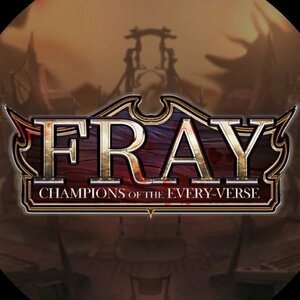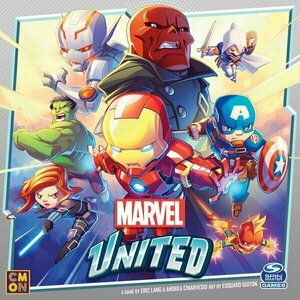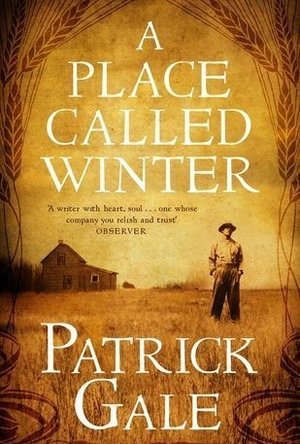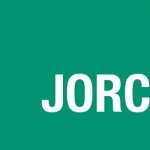
Journal of Renal Care
Education and Magazines & Newspapers
App
Download the Journal of Renal Care(JORC) app to access the latest research on all aspects of chronic...
Purple Phoenix Games (2266 KP) rated Fray: Champions of the Everyverse in Tabletop Games
Jul 1, 2020
DISCLAIMER: We were provided a prototype copy of this game for the purposes of this review. These are preview copy components, and I do not know for sure if the final components will be any different from these shown. Also, it is not my intention to detail every rule in the game, as there are just too many. You are invited to download the rulebook, back the game through the pending Kickstarter campaign, purchase it from your FLGS, or through any retailers stocking it after fulfillment. -L
Fray: Champions of the Every-Verse (referred to as just Fray from now on) is a game of dice rolling, grid movement, and fighting in which players are trying to eliminate all opponents and be the last remaining player in the arena. Before setting up to play, you must first determine how many Champions each player will control. Controlling only 1 Champion is considered “Single Mode” and makes for a quicker play-time. Players can control up to 3 Champions in a single game. After determining how many Champions each player will control, set up the game as described in the rulebook. You are now ready to begin!
A game of Fray is divided into a number of rounds, and to begin each round, all players must select one of their Champions to be the round leader, then roll a d6, and add the appropriate Initiative modifier. This determines the turn order for the round – the highest Initiative gets to go first, and so on in descending numerical order. It is important to note that in future rounds when determining Initiative, you may not select the same Champion to lead for consecutive rounds. After Initiative has been determined, player turns begin. On your turn, you will perform 2 Phases: an Item Phase and a Champion Phase. During the Item Phase, you have the opportunity to play as many Item cards from your hand as you wish. Item cards can give you special abilities or buffs for future turns, or can be played as reactions to opponent’s actions, depending on the card.
Once your Item Phase is done, you move to the Champion Phase. To begin your Champion Phase, choose which Champion you are using and roll the 3 Battle Dice. These dice help activate abilities on your turn. The chosen Champion may now move a number of squares as stated on their card. After movement, your Champion can now activate 1 action from the following: Attack, Defend, or Champion Ability. All actions require you to spend a number of resources in order to perform them, so this is where the Battle Dice come into play. Once you have performed your action, resolve abilities as needed (rolling a save against an attack, rolling the damage die, etc.). If, after resolving abilities, you still have unused Battle Dice, you can choose to store up to 2 of them for use on your next turn. You then repeat the entire Champion Phase with your next available Champion. Once you have used all of your Champions, your turn ends.
After all players have had their turns in a round, you move to the Loot Phase. Any player with any Champion within 3 spaces of the Loot Marker on the board gets to draw 1 Loot card. The first player then rolls a d6 and the Scatter die, and moves the Loot Marker appropriately for the next round. The new round is ready to begin, with all players rolling for Initiative once again. During play, if a Champion is reduced to 0 hit points, that Champion leaves the game. The player with the last remaining Champion on the board is the winner!
Ok, I know that seems like a lot, but the gameplay is actually pretty intuitive and streamlined. Here’s how a turn breaks down: play Item cards, roll Battle Dice, move Champion, perform 1 action, resolve, repeat with your other Champions, turn ends. That’s it! After going through the steps with my first Champion, the process just clicked and the gameplay flowed pretty seamlessly. It admittedly seemed pretty daunting at first when I was reading through the rules, but in the actual game, it is easy to pick up.
With the purpose of this game being knocking out all your opponents, obviously strategy is a pretty big aspect of the gameplay. All Champions have special abilities, attack combos, and types of attacks. Some Champions are only melee fighters and can interact with opponents 1 square away, others are only short- or long-ranged and must be at a distance to attack, and some have the option to be either melee or ranged. Each Champion requires a bit of a different strategy to be played successfully, and you’ve got to be able to adapt on the fly. That being said, this is a competitive combat game, so some players might not like being pitted directly against opponents and being targeted by others. The other strategic aspect to consider is the location of the Loot Marker on the board. The only way you ever get to draw Item cards is if you are within 3 squares of the Loot Marker at the end of the round. Are you willing to risk combat for a chance to gain an Item card? Or are you content with skirting the battlefield and letting your opponents take each other out? All things to consider when playing Fray.
The biggest drawback of Fray for me has to do with some components, or lack thereof. But as I stated earlier, this is only a prototype copy of the game, and I am sure that these things will be addressed in the final production copies! For starters, I’d like to see Turn Order Markers. Since the turn order varies each round based on Initiative, it would be nice to have some numbered markers to help players keep track of the order for the round. Along those lines, maybe a Turn Order Reference card for players could be added as well. The turn steps are generally pretty straightforward, but just having a reminder of the different types of movement, or what resources are required for which actions would be nice. And my final consideration for edits would be to include on each Champion card whether that Champion is a melee, short-ranged, or long-ranged fighter. That breakdown is in the rulebook, but having it on the card would be beneficial as well! Besides those three notes, the components of this prototype copy are phenomenal. The board, cards, and chits are all nice and sturdy. All of the game dice are high quality and easy to read. I know Brain Sandwich Games has plans for sculpted minis for the Champions, but even the simple standees in this copy are easily identifiable and will withstand many plays. The art of the cards is very detailed and awesome to look at. All in all, already a pretty great quality game!
Ultimately, I think Fray is a great game. It may need a little polishing up with some components, but the current gameplay is ready for production. I am not typically someone who enjoys directly competitive games, but Fray was one that I thoroughly loved. It has enough elements of strategy, combat, and luck of the dice rolls that it doesn’t feel targeting or confrontational. I am eager to follow the Kickstarter campaign and see what else Brain Sandwich Games has in store for an already awesome game! I would definitely recommend checking this one out – it’s a unique twist on a standard arena combat game.
Purple Phoenix Games (2266 KP) rated Marvel United in Tabletop Games
Sep 1, 2021
Disclaimer: This review encompasses only the base game of Marvel United. There are a number of expansions, but they will not be addressed in this review. -L
Marvel United is a cooperative game in which players take on the roles of various Marvel superheroes tasked with stopping the main Villain from completing their Villainous Plot. Follow the setup instructions detailed in the rulebook, selecting a Villain with whom to battle, 6 random Locations, and whichever Heroes you decide to use to fight the big bad. Place Threat cards, Civilians, and Thugs on the various Locations as indicated, and place the Villain and Heroes as described in the rules. Shuffle the Master Plan deck and respective Hero decks, and each player draws a hand of 3 cards. Choose a Hero as the ‘starting’ Hero, and the game is now ready to begin!
Over a series of turns, players will be resolving Villain effects and playing Hero cards to perform actions. The game always begins with a Villain turn, and the first step is to reveal a Master Plan card, adding it to the Storyline (table). Master Plan cards have different effects to be resolved – move the Villain to a new Location, BAM! effects (usually attacking Heroes or advancing their Villainous Plot towards victory), and adding Civilians/Thugs to surrounding Locations. Once all effects on the Master Plan card are dealt with, the game moves to a Hero turn. During a Hero turn, the player will perform 4 steps: Draw a card, Play a Card, Resolve Actions, and Location Effects. To start, the player will draw a card from their Hero deck and add it to their hand. They then select a card from their hand to play, adding it to the end of the Storyline.
Looking at the symbols at the bottom of their played card, the Hero will now resolve their actions. Actions could be Movement (to an adjacent Location), Attack (Thugs/Henchmen or the Villain in their current Location), Heroic Actions (rescuing Civilians or working to clear the Threat on their current Location), or Wild (any of the previous actions). During this step, a cool twist comes into play – after all, the game is called Marvel United, right? When a Hero plays a card, they resolve the symbols on the bottom of their card AND the symbols on the bottom of the previously played Hero card! This simulates the various Heroes uniting their efforts to take down the Villain! So when selecting your card, be sure to check out the last card to see if you can create a sweet chain of actions for maximum benefit. The final step is to use Location effects, if applicable. Location effects are only available after the Threat to the Location has been cleared, and allows the player to perform special actions (draw extra cards, move to other Locations, etc.). If you end your turn on a Location that has been cleared, you may use its ability if you so choose.
In order to defeat the Villain, the Heroes must complete Missions. The 3 Missions in each game are to Rescue Civilians, Defeat Thugs, and Clear Threats. So with their actions on their turns, Heroes will be working to complete these Missions, moving them closer to victory. The turn sequence of the game is unique as well – the Villain will take a turn after every 3rd Hero turn, not opposite every single Hero. Keep that in mind as you decide which card to play when! The game essentially continues in this fashion (with a few extra effects) until either the Heroes win or they lose. Heroes win if they defeat the Villain! The Villain is defeated when at least 2 Missions are completed, and the Villain has been sufficiently damaged by Attacks. Heroes lose if the Villain completes their Villainous Plot, the deck of Master Plan cards has run out, or if any Hero starts their turn with no cards left to play. The Heroes either win together or lose together.
So I know that kind of sounds like a lot, but I promise that once you get playing, the game flows really well and is pretty intuitive. Marvel United can basically be broken down into 2 steps: Villain turn and Hero turn. All you are doing is playing cards and resolving actions to complete your goals. One of the coolest things about this gameplay is the fact that on your turn you resolve not only your played card, but also the previously played Hero card as well. It does a good job emulating the Heroes working together, and adds a strategic element to the overall gameplay. Maybe you wanted to play a certain card, but based on the last Hero card, you should play this one to benefit the group the most. Players really are all working together to defeat the Villain, instead of each playing their own Hero and going in for the fight one-on-one.
Another neat aspect of the game is the inclusion of the Missions. Heroes are not allowed to directly attack the Villain until at least 2 Missions have been completed. This ups the gameplay because it stops players from just going straight for the Villain from the start, not taking anything else into account. In ‘real life,’ Heroes are also concerned with saving Civilians and neutralizing threats, so the Mission requirement makes the gameplay feel more authentic. Well, as authentic as a superhero game can feel…. The variability of Locations and the random setup of Threats each game means that you likely won’t play the same game twice. Add in expansions too and you’ve got even more scenarios. With different Hero choices, you get to try out different combinations and find out which Heroes really work well together. The gameplay itself may be simple (draw cards, play cards, resolve cards) but the variety of Heroes, Villains, Locations, Threats, etc. keeps it engaging and entertaining.
As for components, I only have positive things to say. The Villain/Hero minis are chunky and cute, the artwork is all colorful and fun to look at, and the cardboard tokens are thick and crisp. All the symbolism in the game is clear, and the text is legible and easy to comprehend. One thing to consider is that this game can be a bit of a table hog if you let it. So just be prepared for a bit of a bigger footprint with this one. Overall, great production quality of the base game, and from what I’ve seen of the expansions, those are top notch as well.
Don’t let the cutesy artwork fool you – Marvel United isn’t an easy game by any means. It takes a decent amount of strategy to be successful, and it does really take a team effort. You stay engaged in the gameplay right up until the very end, and it’s more involved than you would think for being a lighter game. I am also a big fan of Marvel Legendary, and I have to say that this gives me those vibes, but in a more simplified and streamlined way. I’m not sure I would go as far as to call Marvel United “Marvel Legendary Jr.,” but it’s also not entirely a bad idea….. Overall though, I really liked Marvel United way more than I first anticipated. It’s light, yet strategic, and has some unique elements that keep you on your toes. I can’t wait to get my hands on some of the expansions to see how I can mix and match and create even more awesome scenarios! Purple Phoenix Games gives this one a heroic 16 / 18.
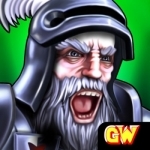
Mordheim: Warband Skirmish
Games
App
Explore the ruins of the City of Mordheim, clash with other scavenging warbands and collect...
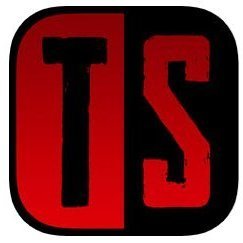
Twilight Struggle
Games
App
The #1 rated strategy board game gets its first expansion! Twilight Struggle: Turn Zero is a new...
BoardGames BoardgameApps Greatgames
Hazel (1853 KP) rated A Place Called Winter in Books
Dec 17, 2018
Loosely based upon a true story, one of Patrick Gale’s ancestors in fact, <i>A Place Called Winter</i> follows the life of Harry Cane during the early 1900s. The book begins with Harry being transferred from a mental asylum to a therapeutic community called Bethel Ranch. The story then backtracks to Harry’s life as a young, nervous, motherless boy and the time he met his future wife, Winnie.
Throughout the book the reader is trying to guess the reason Harry eventually finds himself at Bethel Ranch. Gale describes Harry’s marriage, his discovery of homosexuality and his move to Canada to his final stop at a homestead in a place called Winter. Does Harry develop a mental illness or is it something to do with his scandalous desires? Or, does something else happen later in the book?
After moving to Canada, Harry does not exactly have it easy and the reader feels for him as he perseveres with his new life style. We watch him grow from a timid young man into someone with his own farm and independence. It makes it all the more upsetting to read when certain things take a turn for the worse.
In this historical novel, Patrick Gale emphasizes on the way homosexuality was regarded in society. Entire families cut people out of their lives at the slightest hint of a scandal. Gale also touches on the techniques used within mental asylums during this period as well as racial discrimination.
Occasionally, the story was difficult to read as it alternated between being really interesting and then slightly dull. Overall, regardless of how much was based on actual events, it was a good storyline, and once you have started reading you feel the need to continue to find out what happens to Harry. I have only read one other book by Patrick Gale –<i> Notes From an Exhibition</i> – that I struggled with a little. <i>A Place Called Winter, however, was a lot better than I was expecting. </i>
Gareth von Kallenbach (980 KP) rated Hell or High Water (2016) in Movies
Aug 6, 2019
ourselves cheering for throughout their escapades. Something was always
missing, though. The actions always seemed simple, shallow, and, at times,
comical in their approach. Hell or High Water breaks from many of the
tropes that we are accustomed to with reality-based crime movies. The film
follows two brothers as they rob a chain of banks in the attempt to save
their home and land from foreclosure.
Hell or High Water demonstrates to the audience the complexity with the
story in which this film is based. Marcus (Ben Foster), who is a career
criminal, returns to a life of crime in order to help his brother Toby
(Chris Pine) create a stable future for his children. He has been pushed
to his limits by the banks who have taken advantage of his dying mother
and sees robbing them as the only possible path. They must be quick,
proficient, and calculated in their actions as they are being pursued by a
Texas Ranger (Jeff Bridges) who sees this case as his chance to achieve
some peace as it keeps him further from retirement.
The film is phenomenal in being able to carry several different
storylines, issues, and directions. The film is about Americans with bank
robbing as the backdrop. It demonstrates how working people feel taken
advantage of by the banks and have no sympathy for them as they argue that
the banks are the real criminals in shady deals that result in people
losing their homes. It is an ideal modern western with “the law” hot on
the tail of the bandits. There is no clear bad guy with the brothers, just
a flawed antiheroes that several in the community will not turn against
because they understand that the boys are “one of them” and applaud them
for taking action against the banks.
Audiences will find themselves engrossed in the storyline, expansive views
of Texas, relating to the anger towards financial institutions, and
rooting for these brothers as they try to save their land and legacy.

GlassesOff: Read Without Glasses
Medical and Health & Fitness
App
TRAIN YOUR VISION TO READ WITHOUT GLASSES The GlassesOff program is designed to eliminate...

Deluxe Moon HD - Moon Phases Calendar
Weather and Education
App
------------------------------------------------------------------- * Awarded "New & Noteworthy" by...

Excelerate
Business and Productivity
App
Turn your Excel workbooks into forms for your mobile device with Excelerate! This app is perfect if...
